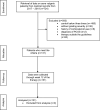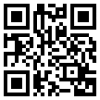Effectiveness of Standard Therapy for Acne Vulgaris Based on Clinical Practice Guidelines in Indonesia
- PMID: 39364260
- PMCID: PMC11447280
- DOI: 10.2147/CCID.S469143
Effectiveness of Standard Therapy for Acne Vulgaris Based on Clinical Practice Guidelines in Indonesia
Abstract
Purpose: To evaluate the effectiveness of standard therapy for acne vulgaris based on Indonesian guidelines.
Patients and methods: New patients with acne vulgaris at Dr. Cipto Mangunkusumo National Central General Hospital, the national referral center in Indonesia, who met the criteria were included in this study. Patients were treated with standard therapy for acne vulgaris based on the 2017 guidelines of Dr. Cipto Mangunkusumo Hospital, depending on severity. Changes in the number of non-inflammatory, inflammatory, and total lesions and the proportion of acne severity after three months of therapy were analyzed retrospectively.
Results: Among the 131 subjects, 63.4% had moderate acne; 20.6% had mild acne, and 16% had severe acne at baseline. Most patients (29 (22.2%)) received a combination of retinoic acid, benzoyl peroxide, and topical or oral antibiotics. Standard therapies reduced the median of non-inflammatory (25 (5-135) vs 8 (0-53)), inflammatory (10 (0-93) vs 2 (0-22)), and total lesions (41 (10-160) vs 10 (1-71)) at week 12 (all p < 0.001). The proportion of acne severity differed significantly after three months, with an increasing proportion of mild acne (20.6% vs 93.1%) and a decreasing percentage of moderate and severe acne (moderate = 63.6% vs 6.1%; severe, 16% vs 0.8%; p < 0.001).
Conclusion: Standard therapy for acne vulgaris based on the clinical practice guidelines in Indonesia improved acne lesions and severity after 12 weeks. These results support the implementation of national guidelines for acne management in Indonesia, with the practice of improving antimicrobial stewardship.
Keywords: Indonesia; acne vulgaris; clinical practice guideline; effectiveness; therapy.
© 2024 Wiraputranto et al.
Conflict of interest statement
This manuscript is part of the author’s thesis. The part that appears online is an archive conducted by the Universitas Indonesia as a thesis requirement and is not a publication. This research has never been published elsewhere. The authors report no conflicts of interest in this work.
Figures
Similar articles
-
Randomised controlled multiple treatment comparison to provide a cost-effectiveness rationale for the selection of antimicrobial therapy in acne.Health Technol Assess. 2005 Jan;9(1):iii-212. doi: 10.3310/hta9010. Health Technol Assess. 2005. PMID: 15588555 Clinical Trial.
-
Comparative Trial of Silver Nanoparticle Gel and 1% Clindamycin Gel when Use in Combination with 2.5% Benzoyl Peroxide in Patients with Moderate Acne Vulgaris.J Med Assoc Thai. 2017 Jan;100(1):78-85. J Med Assoc Thai. 2017. PMID: 29911775 Clinical Trial.
-
Adapalene 0.1%/benzoyl peroxide 2.5% gel: a review of its use in the treatment of acne vulgaris in patients aged ≥ 12 years.Am J Clin Dermatol. 2011 Dec 1;12(6):407-20. doi: 10.2165/11208170-000000000-00000. Am J Clin Dermatol. 2011. PMID: 21967116 Review.
-
Combination therapy with adapalene-benzoyl peroxide and oral lymecycline in the treatment of moderate to severe acne vulgaris: a multicentre, randomized, double-blind controlled study.Br J Dermatol. 2011 Aug;165(2):383-90. doi: 10.1111/j.1365-2133.2011.10374.x. Epub 2011 Jul 6. Br J Dermatol. 2011. PMID: 21495995 Clinical Trial.
-
Dermatology: how to manage acne vulgaris.Drugs Context. 2021 Oct 11;10:2021-8-6. doi: 10.7573/dic.2021-8-6. eCollection 2021. Drugs Context. 2021. PMID: 34691199 Free PMC article. Review.
References
-
- Goh C, Cheng C, Agak G, et al. Acne vulgaris. In: Kang S, Amagai M, Bruckner AL, et al. editors. Fitzpatrick’s Dermatology. 9th. McGraw-Hill; 2019: 1391–1418.
-
- Wasitaatmadja SM, Arimuko A, Norawati L, Bernadette I, Legiawati L. eds.. Pedoman Tata Laksana Akne Di Indonesia: Resume Hasil Indonesian Acne Expert Meeting 2015 [Acne Management Guideline in Indonesia: Results Resume of the 2015 Indonesian Acne Expert Meeting]. 2nd. Kelompok Studi Dermatologi Kosmetik Indonesia PERDOSKI; 2016. Indonesian
-
- Wasitaatmadja SM. ed.. Akne [Acne]. Badan Penerbit Fakultas Kedokteran Universitas Indonesia; 2018. Indonesian.
-
- Widaty S, Soebono H, Nilasari H, et al. editors. Akne [Acne]. In: Panduan Praktik Klinis Bagi Dokter Spesialis Kulit Dan Kelamin Di Indonesia [Clinical Practice Guideline for Dermatovenereologists in Indonesia. Perhimpunan Dokter Spesialis Kulit dan Kelamin Indonesia (PERDOSKI);2017:248–254. Indonesian
LinkOut - more resources
Full Text Sources
Miscellaneous



